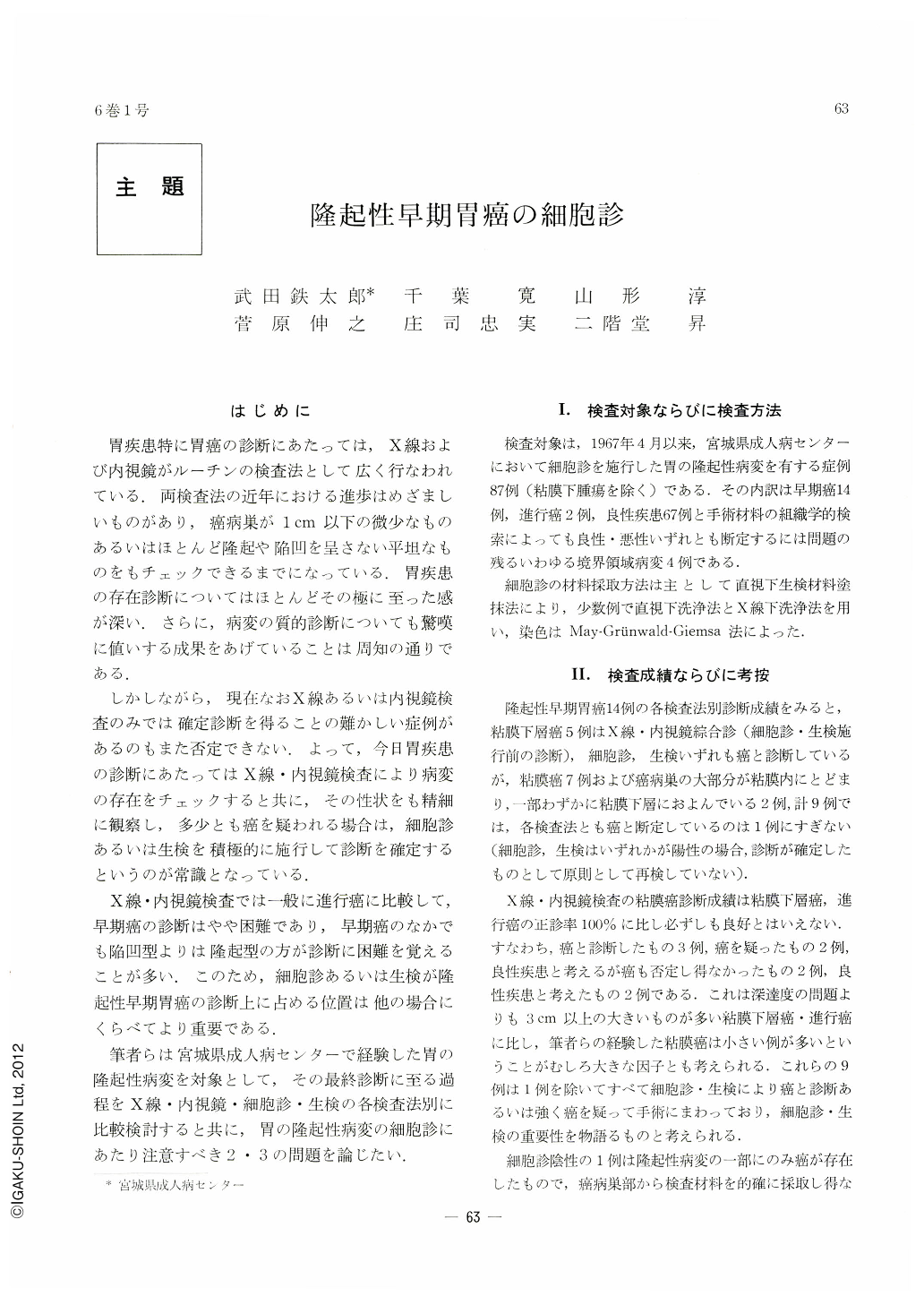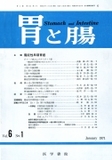Japanese
English
- 有料閲覧
- Abstract 文献概要
- 1ページ目 Look Inside
はじめに
胃疾患特に胃癌の診断にあたっては,X線および内視鏡がルーチンの検査法として広く行なわれている.両検査法の近年における進歩はめざましいものがあり,癌病巣が1cm以下の微少なものあるいはほとんど隆起や陥凹を呈さない平坦なものをもチェックできるまでになっている.胃疾患の存在診断についてはほとんどその極に至った感が深い.さらに,病変の質的診断についても驚嘆に値いする成果をあげていることは周知の通りである.
しかしながら,現在なおX線あるいは内視鏡検査のみでは確定診断を得ることの難かしい症例があるのもまた否定できない.よって,今日胃疾患の診断にあたってはX線・内視鏡検査により病変の存在をチェックすると共に,その性状をも精細に観察し,多少とも癌を疑われる場合は,細胞診あるいは生検を積極的に施行して診断を確定するというのが常識となっている.
X線・内視鏡検査では一般に進行癌に比較して,早期癌の診断はやや困難であり,早期癌のなかでも陥凹型よりは隆起型の方が診断に困難を覚えることが多い.このため,細胞診あるいは生検が隆起性早期胃癌の診断上に占める位置は他の場合にくらべてより重要である.
筆者らは宮城県成人病センターで経験した胃の隆起性病変を対象として,その最終診断に至る過程をX線・内視鏡・細胞診・生検の各検査法別に比較検討すると共に,胃の隆起性病変の細胞診にあたり注意すべき2・3の問題を論じたい.
Although x-ray and endoscopy play very important roles in the diagnosis of gastric cancer, cytology and biopsy are indispensable for its accurate diagnosis. This is exemplified in the 87 cases recently encountered of protruding lesions of the stomach other than submucosal tumors, including 14 cases of early gastric cancer, 2 of advanced cancer, 67 of benign lesions and 4 of borderline diseases. They were first suspected by and endoscopy and later have been confirmed by cytology and biopsy.
Correlation of cytology and biopsy shows that in cancer cases biopsy can sometimes be misleading, while in non-cancer cases, though only in a few, cytology has the same tendency resulting in erroneous diagnosis.
Cancer cells seen in the protruding variety of early gastric cancer present less characteristic malignant pictures such as confluence of cells, variation in their size, polymorphism of cells and nuclei, and abnormal nuclear chromatin pattern. Enlargement of cells are sometimes suggestive, but even in noncancerous cases exceedingly large cells may be demonstrated. When occasion demands, correct diagnosis should be arrived at by paying due notice to abnormal cell clusters as a whole such as looser consolidation of cells and their disorderly arrangement (each cluster of cells is observed as a congregation of far smaller clusters of cells and they are in various directions in an arbitrary fashion, giving an impression of disorderliness).
The so-called atypical epithelium resembles benign lesion in the degree of cell consolidation, but it has a close likeliness to cancer lesion in its disorderly arrangement of cells.

Copyright © 1971, Igaku-Shoin Ltd. All rights reserved.


